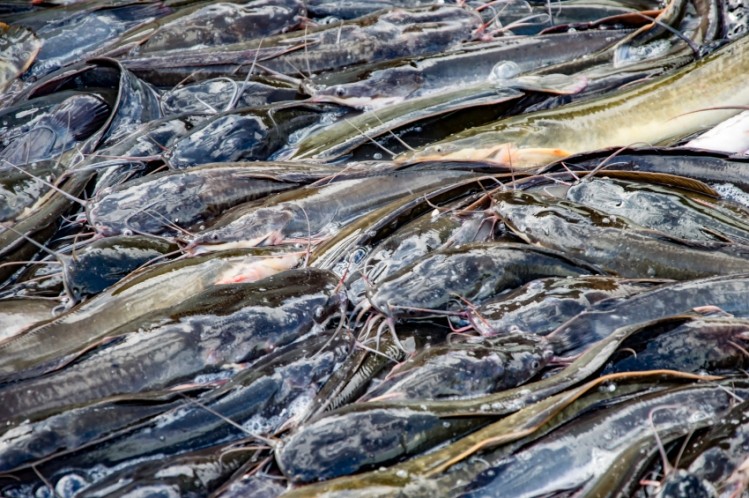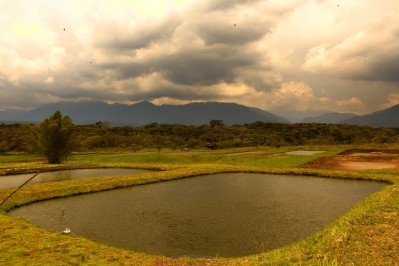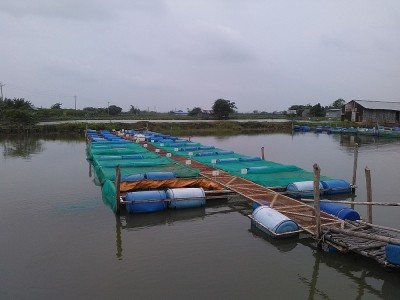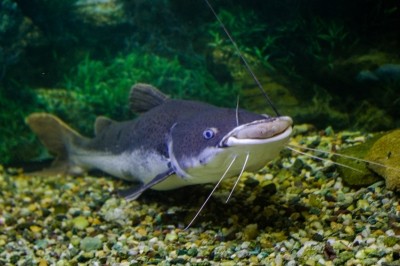Special Edition: Aqua feed Advances
US team explores use of phytase to help with disease mitigation in catfish

The research explores the relationship between the use of plant-based diets for farmed catfish, undigested phytic acid and myo-inositol (MYO) generated from catfish feed and how they relate or support the virulence of Aeromonas hydrophila (vAh). The team is seeking to find a nutritional way to interrupt the disease cycle.
The researchers, led by Eric Peatman, associate professor in the School of Fisheries, Aquaculture and Aquatic Sciences at Auburn University, received a grant from the US Department of Agriculture (USDA) in 2015. They are looking to track what happens when phytase is added to fish feed to help degrade phytic acid in the feed.
Peatman told FeedNavigator that initial findings from the first stage of the multi-year grant indicate that using phytase as a feed additive may improve feed conversion (FCR), improve fish health and growth rate, and boost nutrient absorption.
Breaking the disease cycle
The research focus developed from an interest in breaking a disease cycle that did not focus on the use of an antibiotic or vaccine, said Peatman. It examined using a feed or nutritional component to address vAh challenges found in eastern Mississippi and western Alabama.
“The Aeromonas hydrophila is a common pathogen that you would get in any kind of aquaculture environment, but it’s very diverse, so it can vary in virulence between bacterial strains and depending on the host species,” he said. “It is usually just run of the mill bacteria in a catfish pond, and if catfish are stressed with something else it could kill a few fish – that all changed in 2009 when this virulent form of the pathogen started being detected in the population and started killing as many as half to 75% of the fish in an infected pond in a few days.”
Plant-based catfish feed tends to have a high amount of phytic acid, it can have as much as 2.5% on a dry matter basis, said Peatman. “Most of that is not digested, and that’s a lot of pounds of phytic acid and MYO that is undigested and at the bottom of the ponds,” he added.
Past research at Auburn has found that the virulent strain of vAh has the ability to utilize MYO, which can be an undigested waste product from catfish feed, he said.
The research also tracks the growth performance of fish getting the enzyme additive, according to the grant proposal, and any changes to gut health, the immune system or disease susceptibility.
First-year findings
In the initial set of research trials, the group partnered with SouthFresh Feed to have ABVista’s Quantum Blue phytase sprayed on the fish feed, said Peatman. The feed additive has to be added after feed goes through the extrusion process.
The team set up control and test feed ponds at several farms in Alabama, he said. They also ran a set of lab experiments with the test feed and different species of catfish at Auburn and with collaborator Benjamin Beck, research physiologist at an USDA laboratory in Arkansas.
In the pond-level trials, fish getting the phytase treatment at 2,500 FTU/kg had improved food conversion ratios and fish grew faster, he said. There also was an overall reduction in disease outbreaks, including from vAh.
The control ponds saw a loss of about 54,000 pounds, while the phytase ponds lost about 2,500 pounds, said Peatman.
“The three farmers that participated were ecstatic about what they thought they were seeing,” he said. However, he added, too much emphasis should not be placed on the first year of data as additional trials are needed.
In the lab experiments, catfish were given trial diets and raised for 12-15 weeks, he said. Both channel catfish and hybrid catfish had improved feed performance and better yields.
Additionally, fish getting the phytase supplement had improved hemoglobin levels, hematocrits, and red blood cell counts, along with higher levels of iron and other minerals including zinc, calcium, phosphorus and potassium, he said.
“It’s almost like the phytase fish were blood doping compared to the control fish, and we think that accounts, in part, for why we saw the greater than expected improvements in yield and FCR,” said Peatman. “The observed higher numbers of red blood cells in the phytase fed fish allowed the fish to shunt energy from maintenance to putting on muscle.”
Given the initial results from the first year of the study, many catfish farmers in Alabama have already decided to add phytase to their feed this year, he said.
“It’s been exciting to see,” said Peatman. “The industry has adapted it quickly [and] that’s the difference from in the past, particularly in catfish aquaculture – pretty much all catfish feed in Alabama will have phytase added to it in the 2016 growing season.”
What’s next?
The next step in the project will be to gather a second year of data from the pond-based feeding trials said Peatman. That data should help solidify the impressions generated by the initial findings and researchers will gather samples of water and soil while monitoring pond water quality.
“You have different age classes in a [catfish] pond, which makes for a messy research environment,” he said. “The tightness and quality of the data we can get out of a field study in that manner [means] you have to do it for multiple years.”
Another part of the research work will be to run challenge trials in a controlled environment where fish with specific diets are deliberately infected with the disease, said Peatman.
"We’re going to focus more heavily on the original hypothesis this year,” he said. “We need to dig into more of what we intended to do and that is attempting to interrupt disease cycles through reducing MYO levels reaching the pond floor.”
The group also will be looking at the effects of adding differing levels of the enzyme treatment to fish feed and including a second enzyme – xylanase, he said.












